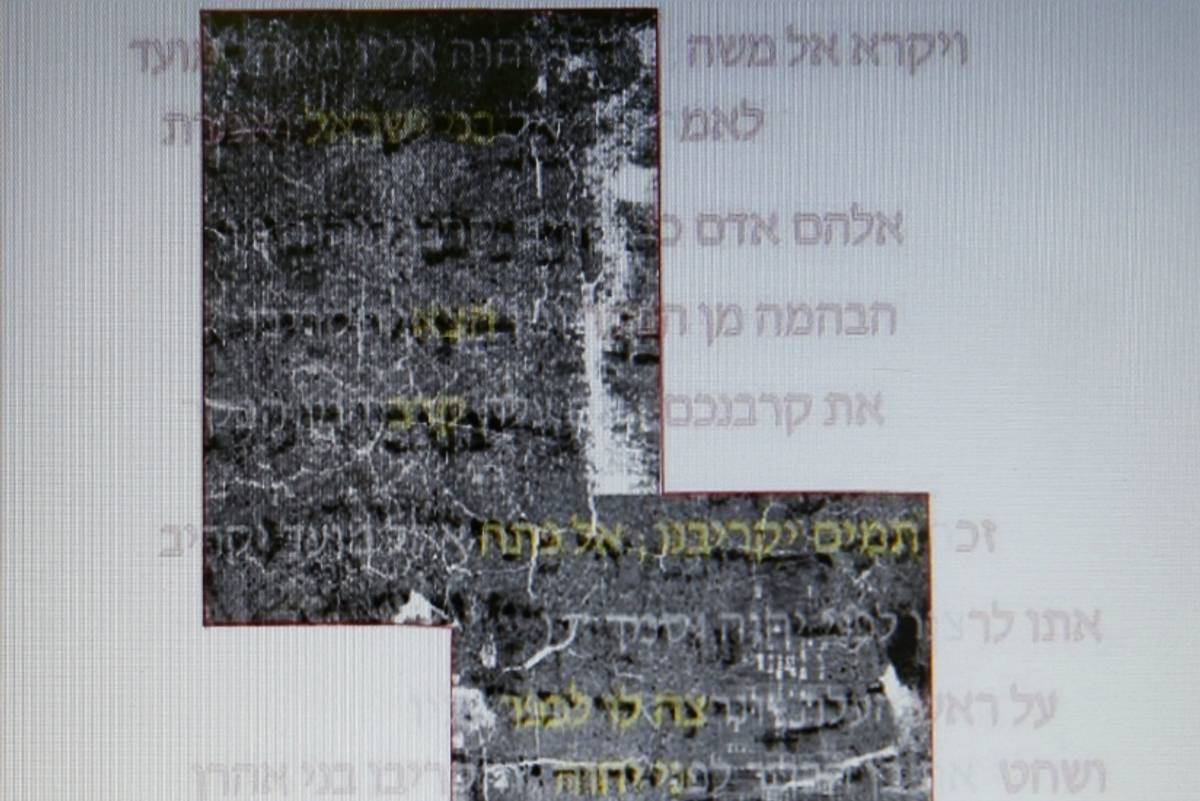
Israeli researchers have been able to decipher a charred scroll that was unearthed in an ancient synagogue over forty years ago. Using advanced technology like high resolution 3-D scanning that produces pixel perfect digital renditions, researchers from the Israel Antiquities Authority (IAA) believe they’ve discovered that the ancient scroll contained verses from the Book of Leviticus. On Monday, the discovery was presented at a press conference in Jerusalem that was attended by the Israeli Minister of Culture and Sports, MK Miri Regev, who called it a “fascinating and important” discovery. “It is instructive about the Jewish people’s deep connection to its country and homeland,” he said.
According to the Israel Antiquities Authority, the Jerusalem-based organization that was responsible for the discovery, the deciphering of this substantial and important part of the Old Testament means that, to date, “this is the most ancient scroll from the five books of the Hebrew Bible to be found since the Dead Sea scrolls, most of which are ascribed to the end of the Second Temple period (first century BCE-first century CE),” the statement read.
The discovery, according to Haaretz, also gains the moniker of the oldest piece of Torah found in a synagogue excavation, replacing the medieval Aleppo Codex, found in the 10th century, which previously held the title.
The scroll is considered to have been burnt around 1,500 years ago when it was inside the Holy Ark of the synagogue in the ancient Israeli town of Ein Gedi. Towards the end of the Byzantine era, the 5th century fire irreparably ravaged the entirety of the Ein Gedi settlement. It left “the Torah scroll, a bronze menorah, a collection of 3,500 coins and other relics to be discovered by archaeologists,” Haaretz reported. Head researcher of the Israeli Antiquities Authority, Dr. Sefi Porath, who initially discovered the scroll, believes that the fire was started either by the Byzantine authorities or by Bedouin raiders. Contemporary Ein Gedi is now an oasis, located west of the Dead Sea and close to Qumran Caves, where the Dead Sea Scrolls were discovered in the 1940s.
When Porath uncovered the charred scroll, the initial attempts to decipher its inscriptions using forensics were unsuccessful, so it was put into storage within the Israel Museum. However, recent developments in scanning technology encouraged scientists to revisit the effort. Once scanned, the images were sent to Professor Brent Seales at the University of Kentucky, an expert in digital imaging software, who, according to the IAA, was able to “virtually unroll the scroll and visualize the text. The great surprise and excitement [came] when the first 8 verses of the Book of Leviticus suddenly became legible.”
“The deciphering of the scroll, which was a puzzle for us for 45 years,” said Porath, “is very exciting.”
Jas Chana is a former intern at Tablet.